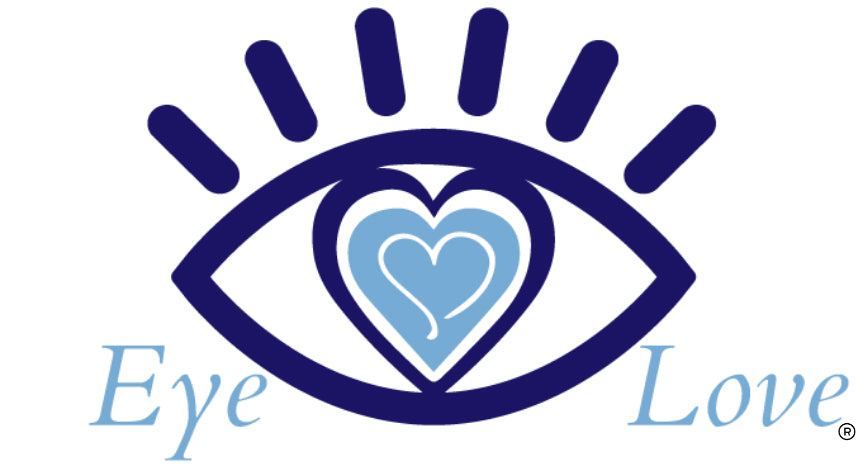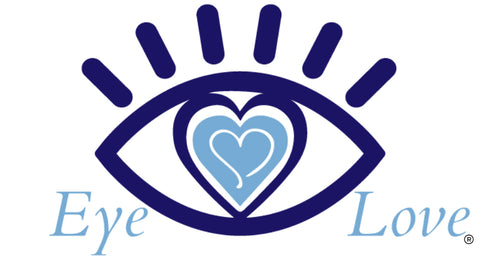What Causes Dryness With Contact Lenses?
Millions of people wear contact lenses, and many of those people know exactly what it feels like when their eyes are irritated, dry, or uncomfortable. It is well known that contact lenses can lead to these symptoms, but why is that?
Contact lenses are essentially pieces of plastic that cover the front of your eye. Although they do allow oxygen to pass to your cornea, they do block a lot of that essential oxygen from making it to your eyes. In addition, if contact lenses are not properly fit, they can irritate the underlying eye tissues.
Overall, contact lenses can contribute to dryness because they increase the evaporation of the tears.
Your tear film is composed of three layers: a mucin layer that keeps the tears attached to your eye, an aqueous layer which is the watery part of your tears, and a lipid layer which provides the oil and prevents evaporation.
When any part of this tear film is disrupted, dryness can occur. Contact lenses specifically attack the lipid layer of the tears, which increases evaporation and causes irritation for even those who have the strongest and healthiest of tear films.
When you increase the evaporation of the tear film, you have the potential to cause the tears to become saltier and the front of the eyes to become more inflamed. This continual cycle of inflammation contributes to irritation and can even contribute to meibomian gland atrophy over time.
In this article, we're going to discuss the best contact lenses to try if you've got dry, irritated eyes.
6 Best Contacts for Dry, Irritated Eyes
Dryness and irritation is the leading cause of people discontinuing contact lens usage. Daily disposable contact lenses may be your next best defense against these irritating symptoms, especially if you're not keen on wearing your glasses full time. These lenses are replaced daily and are never reused. They are intended to be a convenient and healthy way for people to wear contact lenses, whether they wear them every day or just for special occasions.
By using a daily lens, you avoid any build-up of bacteria, allergens, and proteins that can accumulate on contact lenses. We'll now go over a few great options we recommend:
1. Acuvue Oasys 1-Day
These are one of our favorite recommendations because these silicone hydrogel daily disposable lenses provide all-day comfort, great vision and exceptional handling with their exclusive HydraLuxe™ Technology. This contact lens has tear-like properties that provide all-day comfort and performance by working with your natural tear film.
In our experience in clinic, these work very well for most patients with dryness, and they're a great upgrade for the many people who already wear Acuvue lenses. If you're someone who loves to travel, be outdoors, play sports, or even just occasionally wear contact lenses, these are a great option for you. They're comfortable for all ages and for many ocular conditions, including those with irritation.
2. Dailies TOTAL1
This is the first and only daily disposable contact lens to offer water gradient technology, which means that when it touches your eye it'll be like a cushion of moisture. SmarTears® Technology in these lenses features the release of an ingredient found naturally in your tears which can help to stabilize your tear film as well.
These lenses work incredibly well for patients with symptoms of dryness, and we rarely find someone who cannot find comfort in these lenses at least part time. In fact, 9 out of 10 of wearers agree they're so comfortable, they forget they're wearing them. We love these lenses because they're a completely different material than your normal silicone hydrogel or conventional lens.
3. MyDay Daily Disposables
These lenses, by CooperVision, feature everything you need for an exceptional daily disposable experience: uncompromised all-day comfort, easy lens insertion and removal, and a highly breathable lens that helps provide a healthier contact lens experience. Smart Silicone™ is a revolutionary breakthrough used in this lens, and it enables MyDay lenses to provide uncompromised comfort throughout your day. Smart Silicone™ delivers oxygen to your eyes much more efficiently than other daily disposable brands—while using less silicone (so the lenses will be less rigid and more comfortable).
4. BioTrue ONEday
From Bausch and Lomb, and the makers of the ever-popular BioTrue solution (among many other popular products), comes a revolutionary new contact lens. Biotrue® ONEday maintains nearly 100% of its moisture for a full 16 hours, which takes moisture to a whole new level. These lenses actually have the same water content as the eye...78%, so they're going to be super comfortable and hopefully feel great throughout your day. BioTrue is a daily disposable lens unlike any other, and we've found that many people with eye irritation can wear these comfortably.
5. 1-Day Acuvue TruEye
Another one from Acuvue...the 1-Day Acuvue TruEye® Brand Contact Lenses feature an innovative design that provides comfort for people who maximize their wear during the day. These offer the highest UV protection available in a contact lens, and the Hydraclear 1 Technology maintains a consistently lubricated surface, resulting in a lens that's clinically shown to be as comfortable as not wearing lenses at all. This silicone hydrogel lens is breathable and super healthy for your sensitive eyes.
All of the above lenses are daily disposable contact lenses, and they come in packs of either 30 or 90, in most cases. We recommend purchasing 90-packs because then you'll always have them around if needed and you'll save a bit of money as well. If you are only going to wear contact lenses occasionally, for sports or otherwise, you would be fine to purchase a few 30 packs so you're not overstocked with contact lenses.
6. Bausch + Lomb Infuse
The brand new Bausch + Lomb Infuse contact lens is the latest silicone hydrogel daily disposable lens available for patients. These lenses have an aspheric back surface, which many of the premium daily disposable lenses do not have. This gives the patient crisper vision, especially for those with higher prescriptions. Patients may notice less glare at night as well.
There are currently two types of soft lenses on the market; hydrogel and silicone hydrogel. Silicone hydrogels are known for being substantially better for those with dry eye disease. The Infuse also has something called ProBalance Technology. This lens is infused with osmoprotectants which help maintain the ocular surface homeostasis, electrolytes (potassium) to help the eyes and lenses stay in agreement, and moisturizers which help keep the eyes hydrated and maintain a smooth ocular surface.
The downside of this lens is that they are only available in spherical prescriptions at this time. Toric and multifocal lenses may come at a later date.
Contact Lens Solutions to Try
In addition, taking care of your contact lenses is so important! Although daily disposable lenses require virtually no care at all, if you do happen to wear a contact lens that you must keep for two weeks or one month at a time, make sure you're cleaning them properly. Click here to read more about contact lens solutions and proper hygiene. Here are a few of our favorite contact lens solutions:
1. Clear Care Hydrogen Peroxide Solution
We chose this as #1 because its ability to disinfect your lenses is second to none. A hydrogen peroxide based solution is easy to use, and Clear Care has become popular for anyone with contact lens intolerance or irritation. We love this solution because it brings the best of comfort and cleanliness to your contact lens wearing routine, and it is safe for use on all types of contact lenses.
To use, simply place your contact lenses in the small baskets of the contact lens case, one on each side (this solution always comes with a new, specific case which you must use). Then, fill the case with solution to the small line on the side of the case, insert the lens baskets into the container, and screw the top closed.
You'll need to let this solution sit for at least 6 hours in order to disinfect your lenses. After that time, the lenses are safe to put into your eyes. If you attempt to put the lenses in before 6 hours, you risk burning your eyes. So, just wait!
2. Opti-Free Puremoist Multipurpose Solution
Opti-Free Puremoist Multi-Purpose Solution is a wonderful disinfectant solution that can be used for a variety of different lenses. It uses a moisture barrier to prevent debris build-up, and it's a fabulous choice for those who may not want to let their lenses sit overnight. Sometimes, you just need a quick rinse of your lenses, and this solution fits the bill.
The moisture barrier also creates a smooth surface for all-day comfortable wear. Dual disinfectants prevent bacteria, protein deposits and therefore, eye infections from occurring. Opti-Free is definitely one of the top doctor recommended brands out there, and we believe you'll love it for your lenses.
3. BioTrue Contact Lens Solution
If you are looking for another great contact solution, look no further. Biotrue multipurpose contact lens solution has the same pH as healthy tears so you won't have to worry about any irritation, redness, burning, or stinging with the use of this solution.
The solution gives you up to 20 hours of moisture, making it easy to get through your day without tired eyes no matter how long your day is. Plus, it also works as an effective disinfectant, so you only need to use this one product (no saline rinses needed). Biotrue multi-purpose contact lens solution is recommended by many people, and we believe this is a great solution to try.
Contact lens solutions can be so important for overall eye health. If you're allergic to a component in a particular solution, such as a preservative, it can be devastating for your eyes. That's why we give you a few to choose from here. Keep in mind that hydrogen peroxide solutions like Clear Care are preservative free, so that's why we always leave that at #1!
Although not discussed in this article, scleral lenses are another great option for severe dryness because these lenses bathe your eyes in constant tears. The lenses are large, hard lenses, and are filled with a non-preserved saline before inserting into the eyes. These can be super helpful if you're not able to tolerate regular soft lenses.
We, Eye Love, LLC, are a participant in the Amazon Services LLC Associates Program, an affiliate advertising program designed to provide a means for us to earn fees by linking to Amazon.com and affiliated sites. MediViz and Heyedrate branded products are made by our company, Eye Love, but we truly believe that our products are the best on the market! It is important to know that our products are not intended to diagnose, treat, cure, or prevent any disease.





